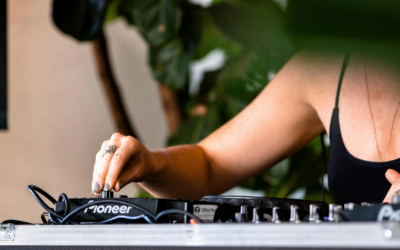Gouki is one of the UK’s best drum and bass DJs. With over 100,000 monthly listeners on Spotify and millions of streams, the Birmingham based DJ is a master of his craft.
Here at Feedback, we racked Gouki’s brain to find out how to be a successful DJ.
Talking about his sound, Gouki said: “So I’ve always wanted to be known as the guy that blends neuro-funk and jump-up.
“I’m a huge fan of neuro-funk and a huge fan of jump up, no one really like mixes them together – not like that.
“There’s like a blend of the two which I absolutely love. But, no one does it and I’m glad that I’m doing it, because I really like hearing it.”
Gouki found a niche within the drum and bass music scene which has allowed him to have a trademark sound. It especially helps that he has been able to blend two of his favourite subgenres of DnB.
Gouki namedropped A.M.C as one of the only other DJs to bridge the gap between neuro-funk and jump-up saying ‘A.M.C, he does it really well to be fair’. Being one of the only DJs to bridge this gap has meant Gouki has been able to grow and grow and grow.
Speaking about how to grow as a DJ, Gouki told Feedback that streams are ‘king’ for growth: “I think putting out a lot of free music in the beginning is good.
“That’s kind of what got me attention, at the very start was I wasn’t really concerned about making money. At first, I was more concerned about just people recognizing my style.
“I was putting out a lot of music for free.
“So yeah, I just I’d be more concerned with people playing your stuff more than anything at the very start, you know?”
Gouki’s path to success has been paved with exposure. It was a case of getting as many people to hear his music as possible and then seeing what stuck for listeners. This trial and error gave Gouki exposure but in turn allowed him to practice an obscene amount.

In terms of actually making a DnB track, it isn’t an exact science.
Gouki said: “Nine times out of ten when I start a track, I don’t have anything in my mind, like, I don’t have any idea.
“It’s literally I’m going to go into the software, and just start messing around with stuff.
“I’m just gonna toy around with things and see if anything happens.”
Ideas aren’t all that. Sometimes it is genuinely just messing about until something works. So, get yourself on Logic and have some fun, something might work.
Following on from ideas, we asked Gouki about drops. Drops are probably the most important part of any DnB song. Personally, the drop in a track is the main reason I listen to DnB. Gouki told me how he tries to make his audience really ‘lock in’ to his drops: “I’m the kind of guy I don’t like it when it’s too overwhelming.
“Like, I think the one of the problems that drum and bass is, people are always trying to create the most crazy, heavy over the top drops when with me, I prefer it when you bring it back a little bit.
“I prefer it, where it’s like you kind of feel it and you get zoned into it. As opposed to having your head blown off.
“I’m trying to make a drop that you really kind of get locked into, if that makes sense.”
Gouki’s efforts to not ‘run with the crowd’ when it comes to heavy drops has meant that he’s been able to make more refined drops that people can really groove with.
His main advice for up-and-coming DJs when it comes to drops was this: “Another good thing is to sit on a drop for a while, and then come back to it with fresh ears, then then you’ll really know if it’s good or not.”
As with any creative endeavour, sometimes the best thing you can do is take a step back for a while and tackle issues with a clear head.
From growing your audience to making a good drop, Gouki’s advice is pertinent.
He is one of the best DJs on offer in the UK at the moment. So, listen, learn and try things out and who knows you could be playing Boomtown in a matter of years.








